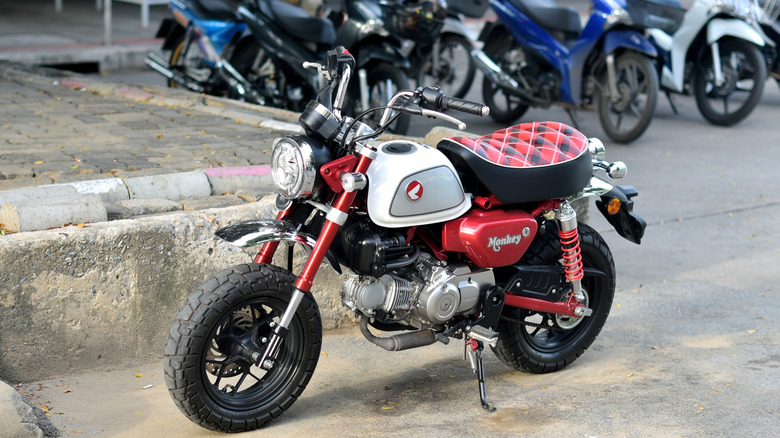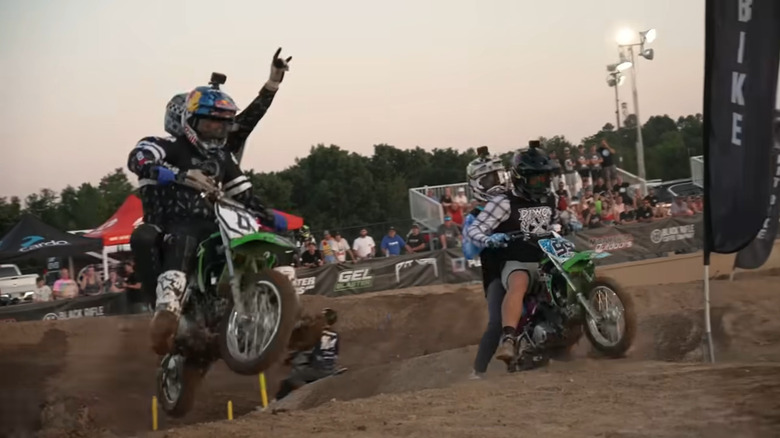What Is A Pit Bike & Is It Street Legal?
Unless you're deeply ingrained in the motocross culture, the term "pit bike" might be something you've never heard of before. These bikes have been around for quite some time, and despite their longevity, a debate exists as to what they actually are now. It's widely agreed upon that these pit bikes first appeared, as the name suggests, in the pit areas of motocross racing events.
Some believe the whole "pit bike" term first started with Honda's line of Monkey bikes, which the Japanese manufacturer began producing in the 1960s. These mini utility bikes were typically used to shuttle behind-the-scenes folks like mechanics, support staff, crew members, and even racers themselves around the pits quickly and easily. Think of them as early versions of today's utility vehicles (UTVs) that are now so prevalent. But that version of the pit bike has undergone an evolutionary change that has blurred the definition. Today's pit bikes look nothing like the Monkey bikes of old. Now, they're essentially scaled-down versions of a standard dirt bike, more closely resembling a mini dirt bike than a minibike.
With smaller frames, they're fitted with engines that range between 50 and 150 cc. They have more torque than pocket bikes and minibikes (like the Coleman model sold at Tractor Supply), but far less than a standard dirt bike. Given their utilitarian use, pit bikes are stripped of virtually everything needed to make them street legal, including blinkers, a horn, a headlight, mirrors, and taillights. They're also typically made with lighter-weight materials and have a very basic suspension system, making them cheaper to purchase and easier to maintain.
Pit bikes let adults act like kids again
Where they were once not particularly adept for track use, that too has changed. Technically speaking, a pit bike is still a minibike, so if you're thoroughly confused by that, think about it this way: kids ride mini dirt bikes, and adults ride pit bikes. Or so some say. As humans are wont to do (especially around testosterone-fueled race environments), over the years, people began pushing the envelope and generally became a less hazardous version of Evel Knievel with his wild and crazy jumps.
Seeing an opportunity, Honda went back to the drawing board and redesigned the Monkey bike with extra pop. Other brands, like Kawasaki, jumped on the bandwagon and built the KLX110, while Yamaha rolled out its TTR. These 4-stroke bikes were slightly bigger and more rugged — all the more to entice adult riders. Still, none of them included the requisite equipment (blinkers, headlight, taillights, etc.) to make them street legal. That's not to say you can't make them roadworthy, but it requires time, money, and, if your state and local laws will even allow it. In many cases, they don't, and even if they did, it may be cheaper to buy a version of these diminutive dirt bikes that are legal (where applicable) straight from the factory.
Where pit bikes were once thought of as a lower-quality tier of bike unsuitable for competitive racing, they've become so popular that whole events now exist around this particular classification. Because who doesn't want to watch full-sized riders squeeze themselves onto fun-sized bikes and see what craziness ensues?

